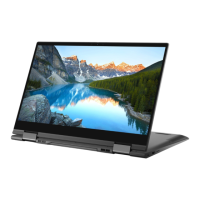xiii
1RWDWLRQDO&RQYHQWLRQ V
The following subsections list notational conventions used in this document.
:DUQLQJV&DXWLRQVDQG1RWHV
Throughout this guide, there may be blocks of text printed in color or in italic type.
These blocks are warnings, cautions, and notes, and they are used as follows:
:$51,1*$:$51,1*LQGLFDWHVWKHSRWHQWLDOIRUERGLO\KDUPDQGWHOOV
\RXKRZWRDYRLGWKHSUREOHP
&$87,21$&$87,21LQGLFDWHVHLWKHUSRWHQWLDOGDPDJHWRKDUGZDUHRU
ORVVRIGDWDDQGWHOOV\RXKRZWRDYRLGWKHSUREOHP
NOTE: A NOTE indicates important information that helps you make better use of
your computer.
7\SRJUDSKLFDO&RQYHQWLRQV
The following list defines (where appropriate) and illustrates typographical conven-
tions used as visual cues for specific elements of text throughout this document:
Interface components
are window titles, button and icon names, menu names
and selections, and other options that appear on the monitor screen or display.
They are presented in bold.
Example: Click OK.
Keycaps
, the labeling that appears on the keys on a keyboard, are enclosed in
angle brackets.
Example: <Enter>
Key combinations
are series of keys to be pressed simultaneously (unless other-
wise indicated) to perform a single function.
Example: <Ctrl><Alt><Enter>
Commands
presented in lowercase bold are for reference purposes only and are
not intended to be typed at that particular point in the discussion.
Example: “Use the setup command to . . . .”
In contrast, commands presented in the Courier New font are intended to be
typed as part of an instruction.
Example: “Type format to format the diskette in drive A.”
Filenames
and
directory names
are presented in lowercase bold.
Examples: autoexec.bat and c:\windows

